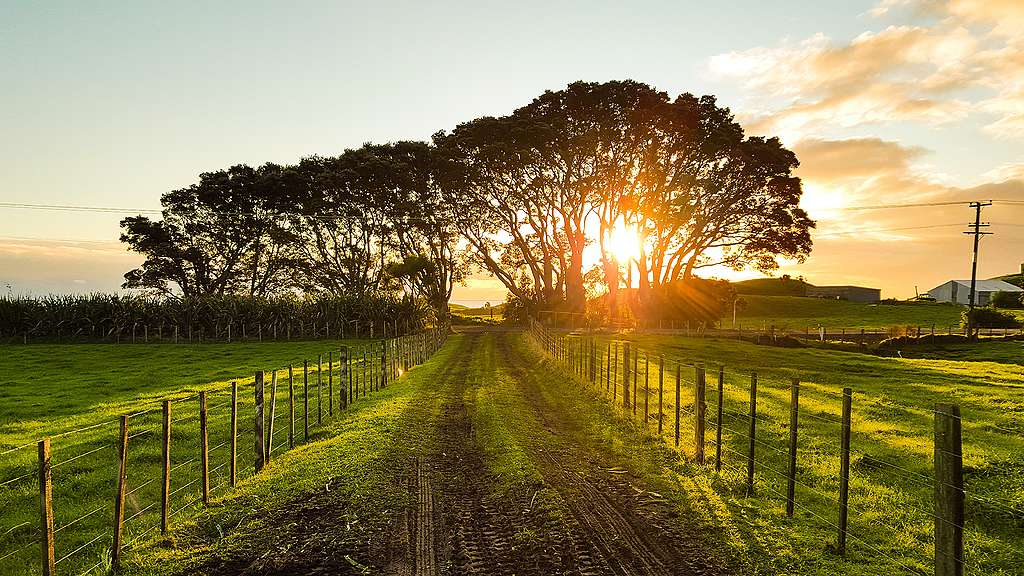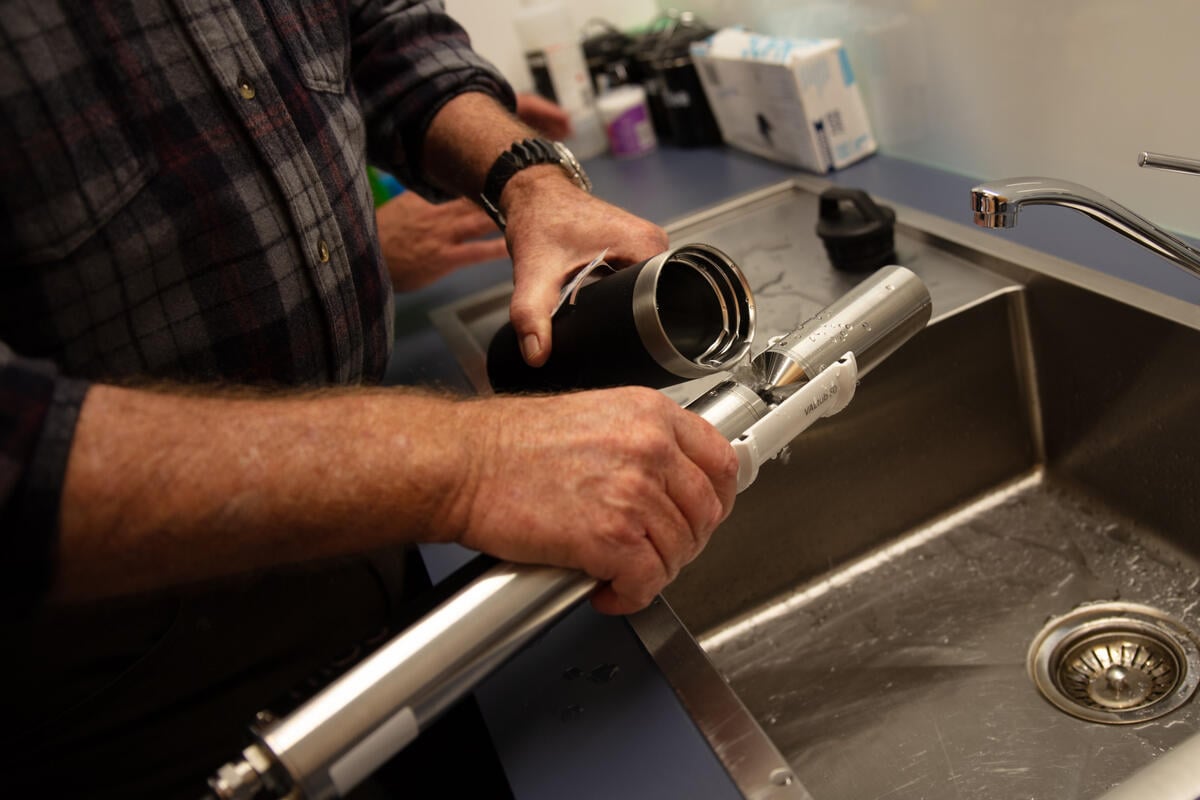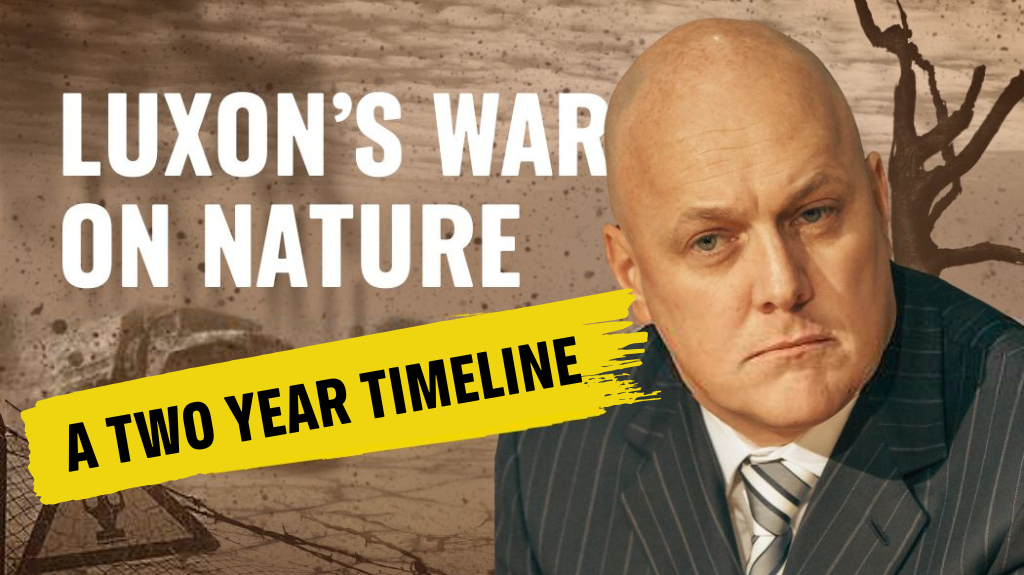A day in the life of a regenerative farmer striving to future-proof New Zealand’s food system
Mist is rising off a valley of native trees deep in the Hawkes Bay backcountry. Long grasses make perfect hiding places for insects and a throng of birds is making the most of them, diving in and out of the pasture and swarming overhead.
I turn to farmer Greg Hart who’s land I’m visiting, and he laughs at my look of wonder.
“Growing longer grass,” Hart explains, “[means] bigger insect populations… when the animals run through they’re bringing up the insects and now there’s all these big flocks of birds flying around – it’s just how ecosystems work.”
Regenerative farming means working with nature
As cows move through long grasses they kick up insects which birds eat, working in with the natural systems already in place.
Hart is describing to me how it feels to farm in harmony with nature, as we look out across the 650 hectares of land he tends in the Hawkes Bay, along with his wife Rachel and their family.
Rolling hills and pastures surround us, an enormous lake is the centerpiece, with ducks and geese nestling in the rushes and to the east are steep ridgelines climbing into dark grey clouds. A mix of introduced and native trees dot the landscape while densely covered areas hem the waterways, stopping soil and water run-off and protecting streams from cows.
Roots and shoots
Trees are incorporated into the farmscape using a method called silvopasture which combines trees and shrubs with livestock production. Trees provide shade for animals, shelter fields and protect soil, all while drawing down carbon from the atmosphere.
As a farmer using regenerative and organic farming practices, Hart says it’s been his journey of deepening his connection with nature that’s made all the difference.
“Indigenous wisdom has known for a long time about the interconnectedness of everything and that’s a pretty hard concept to grasp initially for most of us,” he says.
“I’ve learnt I need to sometimes just get out of the way, let nature do its thing, learn more about it and then work with it.”
As well as farming 800 cattle, mostly for beef, the farm has sheep, pigs – the female had piglets recently – chickens, nut and fruit trees and a modest vege garden, all set against diverse silvopasture; a method of grazing stock underneath canopy cover, improving the welfare of grazing animals by providing shelter, while enabling the farmer to earn money through the emissions trading scheme and helping to mitigate climate change.
Piglets eat smashed up pumpkins grown by a local farmer nearby, as well as dairy milk from the farm’s milking cows. The farm raises pigs along with cows for beef and dairy, sheep and chickens.
Alongside the farmland, there is land set aside for conservation, with a giant swampy Kahikatea forest all planted up with natives – 85,000 of them to be exact – which was funded through Air New Zealand’s carbon offsetting program several years ago.
A soaring success
Conservation estate on the farm provides homes to abundant bird life as well as ancient kahikatea groves, while Hart runs a trapline keeping out pests.
The day we visit happens to be the 25 year anniversary of Greg and Rachel’s move to the farm. A lot has changed, says Hart, not just on the land, but in the community as well.
“In this little bubble on the farm here, the world has been getting better every day,” he reckons.
“There’s more biodiversity, the soil’s getting better, there’s more trees growing, there’s more insects, there’s more birds, it’s getting healthier, more people are coming to visit us so you’re getting good vibes and people who are engaged and enthusiastic.”
I’ve been talking to farmers in the organic and regenerative sector for a while now, as part of my work for Greenpeace’s agriculture campaign.
A big part of our campaign is to advocate for a phase-out of inputs like synthetic fertilisers and other chemicals, which are threatening our climate, rivers and soil health.
It may seem like a strange meeting, farmers and “greenies” like us, but I see us as different sides of the same coin;
While we’re out trying to stop the bad stuff from happening, farmers like Greg Hart, all across the country, are working on making the good stuff happen; farming organically and regeneratively, and, as Hart says, working in harmony with nature.
Forced into intensive farming through policy reforms and successive governments jumping on the dairy boom, not to mention the pressure fertiliser companies put on the sector to keep pumping the land with chemicals, farmers all across the country are now reimagining our food system; using growing techniques which drawdown carbon from the atmosphere and store it safely away in healthy soils, farmers could hold the key to solving our climate crisis.
The good stuff
Greg Hart is one of many farmers in New Zealand transforming the food system to rely less on chemical fertilisers.
The most immediate thing I notice on the farm is increased biodiversity. We spend a lot of the visit hooning across fields on Hart’s unusually roomy quad bike; it’s carrying myself, Hart, our photographer Ben, my colleague Torisse, three trays of eggs and a very studious jack russell-cross (“she takes her job very seriously,” says Hart). As we bump our way through the fields, I can’t help but notice the different kinds of grasses and ground cover, the riparian planting of the streams and the fruit and nut trees dotted around as part of Hart’s agroforestry work.
Hart stops so we can take some close up shots of the pasture. He holds a sample up for us – fescue, dandelion, buttercup, clover, rye grass and chicory, with its pretty blue flowers.
“The animals love it because they know there’s things they need in it,” says Hart.
Regenerative farming is all about diverse pastures
Having more diversity adds resilience and strength, Hart says, holding a variety of plants picked from the average set of pasture on his land.
While the diverse pasture feeds the cows it is also feeding another kind of “livestock” living under the grass. Billions of microorganisms dwell in the soil, decomposing organic matter, cycling nutrients and fertilising the soil. Different kinds of plants growing in the soil, with different root structures, bring about stronger and more resilient soils whereby tap roots create space in the earth where water can collect. Diverse pastures stop compaction and ultimately mean more microscopic creatures can live and keep the soil healthy.
Hart puts it really simply; “nature is our teacher, and nature just doesn’t do monocultures.”
Healthy soil is critical to food production and needs to be preserved if we are to keep farming and growing food says farming consultant Nicole Masters.
“Our biggest export continues to be soil,” she told New Zealand Geographic last year.
But unless we change our farming practices drastically, we are at risk of losing this precious resources, which could have alarming consequences for our food system.
The Ministry for the Environment and Stats NZ’s latest joint report, Our Land 2021, checked the health of soil and found it to be in a critical condition.
Jamie Morton wrote in The New Zealand Herald; “the quality and quantity of soil is crucial for storing water, carbon and nutrients, growing food, breaking down contaminants and hosting an abundance of species.”
“Our economy depends on good soil to grow food for home and export, but soil health is depleting with overuse of chemical fertilisers and irrigation,” he writes.
Meanwhile, just over half of New Zealand’s greenhouse gas emissions came from methane and nitrous oxide – and most of that comes from agriculture.
Mitigating this will be a challenge, but the solutions are there.
In order to kickstart a “regenerative revolution” New Zealand needs to step in behind farmers to help them transform their farms to work with nature, Hart says.
“You can’t have regenerative agriculture without an entire regenerative society, you can’t just have farmers in isolation doing their thing, it has to be part of the whole community,”
“We’re already talking about circular economies, that whole thing ties into agriculture, the whole of society could incorporate a regenerative approach,” he says.
“That’s what I see as New Zealand’s opportunity – becoming a regeneration nation.”
Already around the world, many governments have already recognised the environmental and social benefits of regenerative farming and increased public spending and policies to support it.
With investment and support, the New Zealand Government can shift the nation to a more regenerative approach and build a resilient agriculture sector.
With thousands of farmers across Aotearoa like Hart and his family, transitioning to regenerative and organic methods of farming, the future of agriculture is hopeful, but they need real support to get there.

Call on Christopher Luxon to set up a billion dollar fund to transition New Zealand away from industrial to regenerative agriculture.
Take Action


